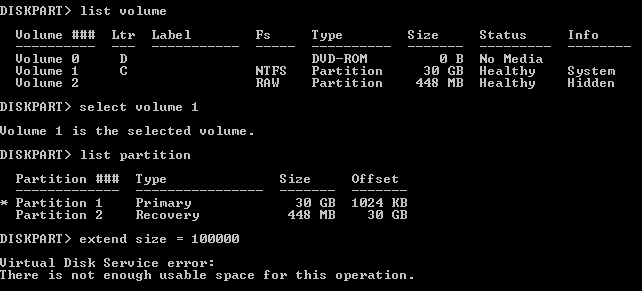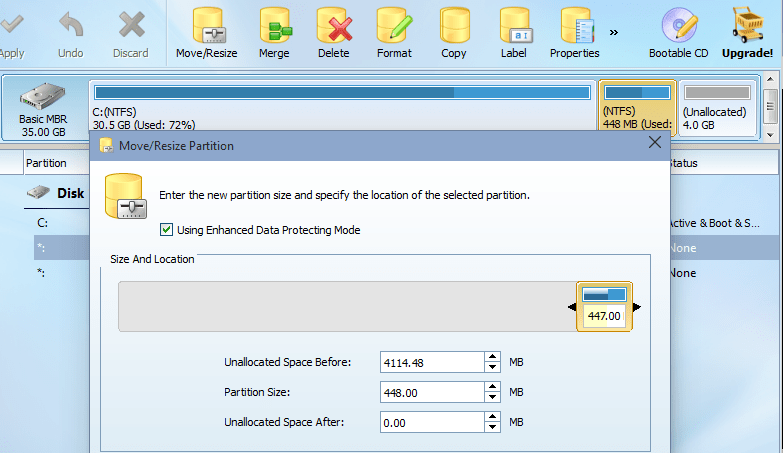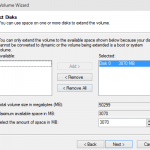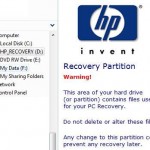Extend Volume is useful when a partition is running out of space and there is free unallocated space on the hard disk. Extra disk space can be added to a partition or volume that has not enough disk space to save new files, install programs or perform updates.
However, Extend Volume function is not always available for all disk partitions or volumes. Sometimes, when you want to expand a partition or volume, you may notice that the Extend Volume option is grayed out and disabled, effectively prevents the disk partition to be expanded in size.
If you attempt to extend the volume or partition size via DiskPart utility, you get the following error instead:
Virtual Disk Service error:
There is not enough usable space for this operation.
The built-in disk partitioning tools of Windows only support extension of volume or partition if the unallocated disk space is not contiguously located after (to the right of) the partition to be expanding in size, or the partition is not of NTFS or RAW filesystem.
The only workaround to expand the partition or volume is this case is by using third-party partition editor which has more advanced features. Luckily there is many disk partitioning utilities that are available for free, and can perform the extending of partition on the fly without the need of reboot or boot from CD.
Here’s a few free disk partitioning software available:
- MiniTool Partition Wizard
- EaseUS Partition Master
- Paragon Partition Manager
- GParted (Live CD image requires reboot)
After installing any third-party disk partitioning tool, there are two approaches that you can take to extend a partition or volume:
- Extend the partition size directly.
- Move the partition so that the free unallocated disk space is located contiguously after the partition to be extended. Normally, this is done by moving the partitions that stand in between the target partition and free space away to the back or front.
Then, using Disk Management in Windows to perform the “Extend Volume”.











